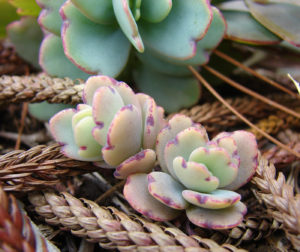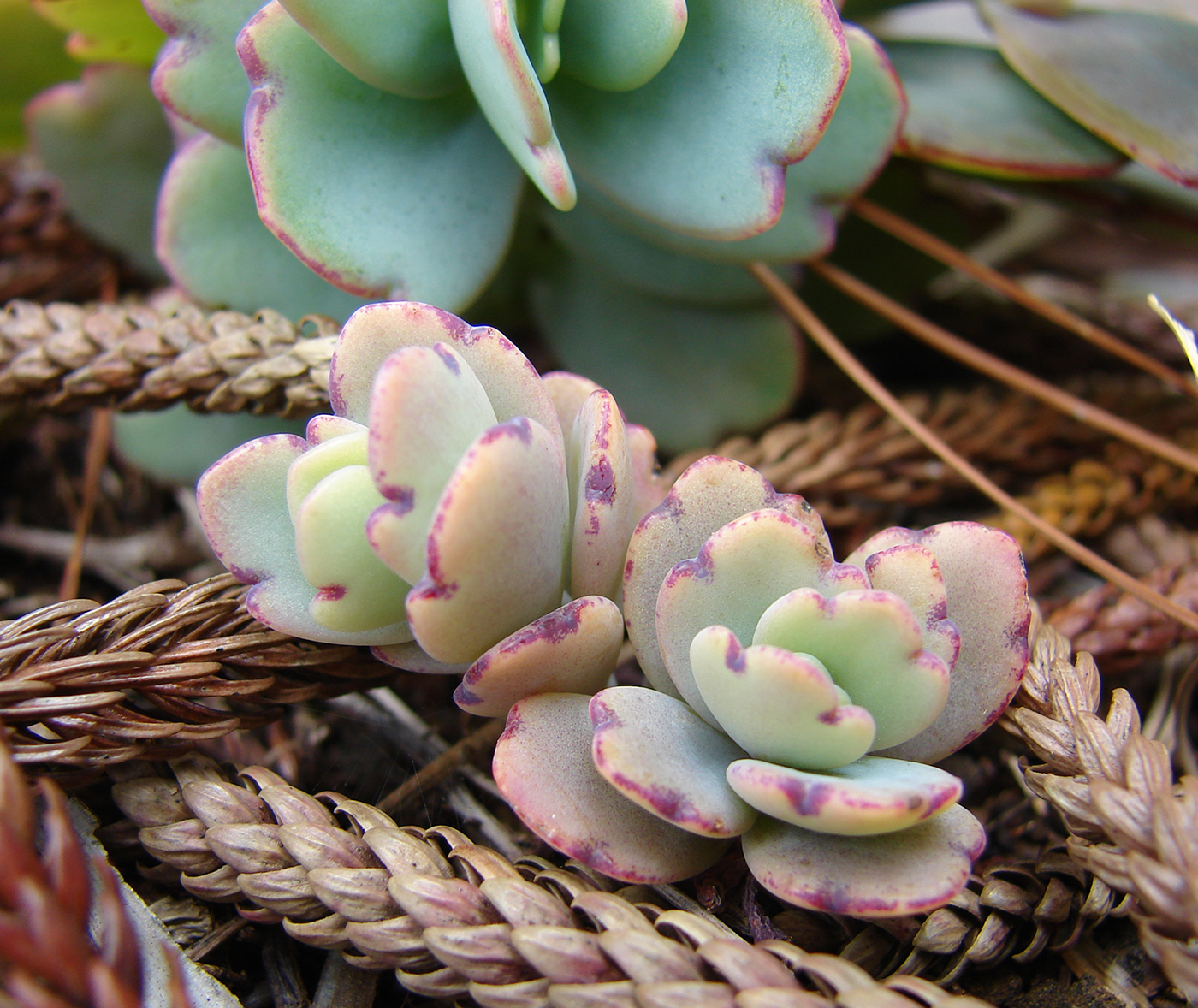 In the presence of abundant water and sunlight, most plants conduct photosynthesis using what is known as the C3 pathway. Some plants can conduct C4 photosynthesis in water-limited conditions; a different enzyme collects carbon dioxide from the air to form a 4-carbon chain that lends itself to the pathway name. In water-poor conditions, some plants collect and process carbon at night rather than during the day through crassulacean acid metabolism (CAM) photosynthesis, named for its discovery in succulents. In the December 1, 2017 issue of Nature Communications, a team led by Oak Ridge National Laboratory researchers and including scientists at the Joint Genome Institute sequenced and analyzed the genome of Kalanchoë fedtschenkoi to better understand how this plant transitioned from C3 to CAM photosynthesis. Read more on the JGI website.
In the presence of abundant water and sunlight, most plants conduct photosynthesis using what is known as the C3 pathway. Some plants can conduct C4 photosynthesis in water-limited conditions; a different enzyme collects carbon dioxide from the air to form a 4-carbon chain that lends itself to the pathway name. In water-poor conditions, some plants collect and process carbon at night rather than during the day through crassulacean acid metabolism (CAM) photosynthesis, named for its discovery in succulents. In the December 1, 2017 issue of Nature Communications, a team led by Oak Ridge National Laboratory researchers and including scientists at the Joint Genome Institute sequenced and analyzed the genome of Kalanchoë fedtschenkoi to better understand how this plant transitioned from C3 to CAM photosynthesis. Read more on the JGI website.




